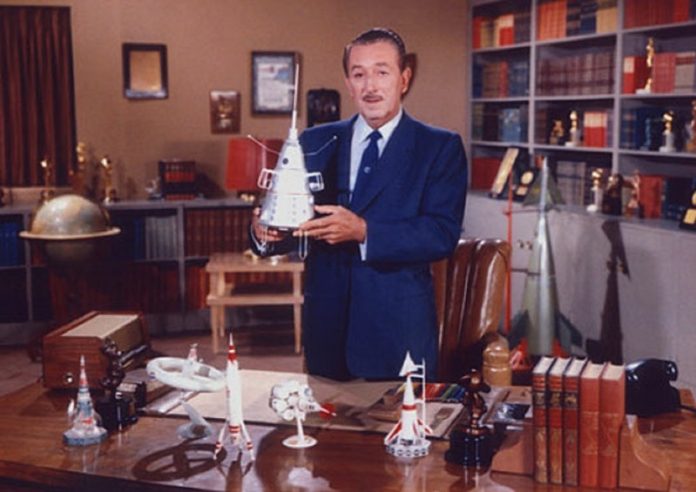Tuesday, the BBC reported on a hitherto little-known proposal in the early 1950s to use a modified V2 rocket to put a Briton into space in a suborbital flight similar to that taken by American astronauts Alan Shepard and Gus Grissom a decade later, The thing could have been done technically. Unfortunately, Great Britain’s economy was all but ruined by the Second World War. What government funding that was available was being used for aviation and nuclear technology development. Britain was also in the process of creating a welfare state, which left little for a space program.
After the conquest of Nazi Germany in 1945, the United States, and the Soviet Union grabbed between them the lion’s share of Hitler’s rocket program. The United States acquired the services of Wernher von Braun and most of his engineering team, a bonanza that would serve it in good stead when President John F. Kennedy threw down the gauntlet and started the race to the moon.
Great Britain acquired some extra V2 rockets that the Nazis had been using to bombard London during the closing months of the war in Europe. The British test fired them from sites in Holland and discovered, to their astonishment, that Von Braun had solved virtually all of the problems of liquid fueled rockets. That is when things got interesting.
“Engineers at the British Interplanetary Society in London decided this technology could help them realise their dream of building a spaceship, a dream that had been considered fanciful only five years earlier. In 1946, society member, designer and artist Ralph Smith put forward a detailed proposal to adapt the V2 missile into a “man-carrying rocket.”
“Smith’s Megaroc design involved enlarging and strengthening the V2’s hull, increasing the amount of fuel and replacing the one-tonne warhead with a man-carrying capsule. The rocket would not have been powerful enough to carry a person into orbit. Instead, the spaceman (and only a man was considered) would have been launched on a parabolic trajectory some 300,000 metres above the Earth.
“Launched at an angle of two degrees, once in space the rocket would drop away and the segmented nose-cone would peel back to expose the capsule. Smith provided two windows in his design and suggested the space pioneer, kitted out in a high-altitude flying suit, might use his few minutes in space to carry out observations of the Earth, atmosphere and Sun. With the West squaring up to the Soviet Union, Megaroc would also have been ideal for spying on enemy territory.
“After five minutes or so of weightlessness the capsule would fall back to Earth, its heatshield protecting the spaceman from harm. Parachutes would be deployed and it would float slowly to the ground. There was even a separate parachute for the rocket, intended to make the whole spacecraft reusable.
“Smith worked out everything – from the exact dimensions of the rocket to the thrust of the engines and g-forces the astronaut would experience.”
As mentioned before, Britain was not in a financial position to start a space program in the 1940s, so the idea was abandoned. However, in a little game of what-if, it occurs that the United States, which was using captured Nazi hardware and engineers to develop military rockets, had the financial wherewithal to mount the sort of program proposed by Ralph Smith.
Imagine a scenario in 1946 or 47 in which the British government was intrigued enough by the Smith proposal to approach the United States to make it a joint program. Would President Harry Truman have been receptive to the idea? Let’s suppose that he was.
In 1951, a United States Air Force test pilot is fired into space in the modified V2 and becomes the first man in space. The flight is followed by a second mission with a Royal Air Force pilot. The manned space program begins ten years early.
Then, things really get interesting.
In 1952, the first articles appear in Colliers Magazine describing the glories of what a space future might be like, with a space station in low Earth orbit and flights to the moon and Mars. Three years later, the first Walt Disney space-related TV show, “Man in Space,” aired. The show was followed by two more, depicting flights to the moon and Mars. Von Braun was the technical adviser for the series,
To be sure President Dwight Eisenhower was not a fan of space adventures, being an unimaginative sort. But Senate Majority Leader Lyndon Johnson did see some of the political and military implications of space flight and might have had enough pull to force the military to go the next step and put a man in orbit. This program would drive the development of rockets capable of firing nuclear warheads against the Soviet Union and would have provided a benign, civilian face to such a project. One could even justify a space station as a platform for real-time reconnaissance of enemy territory. The 1950s space program would be a joint American-British project.
Could men have flown in orbit by — say — 1954? Could a space station have been deployed by 1960? Men on the moon by 1965? The scenario may be a flight of fancy, but it is not outside the realm of the possible.
And, of course, the Soviets would notice what was going on and would be obliged to ramp of their own efforts. How history would have proceeded from there can but be imagined.















